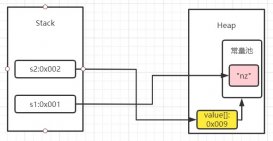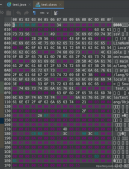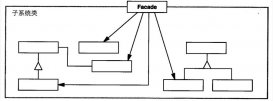redis 3.x版本引入了集群的新特性,为了保证所开发系统的高可用性项目组决定引用redis的集群特性。对于redis数据访问的支持,目前主要有二种方式:一、以直接调用jedis来实现;二、使用spring-data-redis,通过spring的封装来调用。下面分别对这二种方式如何操作redis进行说明。
一、利用jedis来实现
通过jedis操作redis cluster的模型可以参考redis官网,具体如下:
|
1
2
3
4
5
6
7
8
9
10
11
12
13
14
15
|
set<hostandport> jedisclusternodes = new hashset<hostandport>(); //jedis cluster will attempt to discover cluster nodes automatically jedisclusternodes.add(new hostandport("10.96.5.183",9001)); jedisclusternodes.add(new hostandport("10.96.5.183",9002)); jedisclusternodes.add(new hostandport("10.96.5.183",9003));jediscluster jc = new jediscluster(jedisclusternodes);jc.set("foo","bar");jc.get("foo"); |
二、利用spring-data-redis来实现
目前spring-data-redis已发布的主干版本都不能很好的支持redis cluster的新特性。为了解决此问题spring-data-redis开源项目组单独拉了一个315分支,但截止到目前尚未发布。下面在分析spring-data-redis源码的基础上配置spring实现操作redis cluster.下面分别针对xml和注入的方式进行说明。
315分支gitHub下载路径如下:https://github.com/spring-projects/spring-data-redis
(1)采用setclusternodes属性方式构造redisclusterconfiguration
代码目录结构如下所示:
|
1
2
3
4
5
|
src com.example.bean com.example.repo com.example.repo.impl resources |
a.在resources目录下增加spring-config.xml配置,配置如下:
|
1
2
3
4
5
6
7
8
9
10
11
12
13
14
15
16
17
18
19
20
21
22
23
24
25
26
27
28
29
30
31
|
<!--通过构造方法注入redisnode--> <bean id="clusterredisnodes1" class="org.springframework.data.redis.connection.redisnode"> <constructor-arg value="10.96.5.183" /> <constructor-arg value="9002" type="int" /> </bean> ....<!--setter方式注入--><bean id="redisclusterconfiguration" class="org.springframework.data.redis.connection.redisclusterconfiguration"> <property name="clusternodes"> <set> <ref bean="clusterredisnodes1"/> <ref bean="clusterredisnodes2"/> <ref bean="clusterredisnodes3"/> </set> </property> <!--红色所示部分在从github上获取的jar包中无对应setter方法,因此需要修改其对应的源码。 |
另外,如果不设置clustertimeout值,源码中默认为2s。当集群服务器与客户端不在同一服务器上时,容易报:could not get a resource from the cluster;
如果不设置maxredirects值,源码中默认为5。一般当此值设置过大时,容易报:too many cluster redirections -->
|
1
2
3
4
5
6
7
8
9
10
11
12
13
14
15
16
17
18
19
20
21
22
23
24
25
26
27
28
29
30
31
32
33
34
35
|
<property name="clustertimeout" value="10000" /> <property name="maxredirects" value="5" /> </bean> <!--setter方式注入,对应的属性需存在setterxxx方法--> <bean id="jedispoolconfig" class="redis.clients.jedis.jedispoolconfig"> <property name="maxtoal" value="1000" /> <property name="maxidle" value="1000" /> <property name="maxwaitmillis" value="1000" /> </bean> <bean id="jedisconnfactory" class="org.springframework.data.redis.connection.jedis.jedisconnectionfactory" p:use-pool="true"> <constructor-arg ref="redisclusterconfiguration" /> <constructor-arg ref="jedispoolconfig" /> </bean> <bean id="redistemplate" class="org.springframework.data.redis.core.redistemplate" p:connection-factory-ref="jedisconnfactory" /><!--setter方式注入personrepoimpl--><bean id="personrepo" class="com.example.repo.impl.personrepoimpl"> <property name="redistemplate" ref="redistemplate" /></bean> |
注:加载lua文件
|
1
2
3
4
5
6
7
|
<bean id ="xxx" class="org.springframework.data.redis.core.script.defaultredisscript"> <property name="location" value="./redis/xxx.lua" /> <property name="resulttype" value="java.lang.void" /></bean> |
在com.example.repo.impl下增加personrepoimpl,主要包括属性private redistemplate<string,bean> redistemplate(该属性存在setterxxx方法,对应property属性);
利用redistemplate.opsforhash().put()即可完成对redis cluster的操作。
|
1
2
3
|
classpathxmlapplicationcontext context = new classpathxmlapplicationcontext(new classpathresource("resources/spring-config.xml").getpath());repo repo =(repo)context.getbean("personrepo"); |
(2)采用redisclusterconfiguration(propertysource<?> propertysource)方式构造redisclusterconfiguration
代码目录结构如下所示:
|
1
2
3
4
5
6
|
src com.redis.cluster.support.config monitorconfig resources spring-config.xml redis.properties |
a.在resources目录下增加spring-config.xml配置,配置如下:
|
1
2
3
4
5
6
7
8
9
10
11
12
13
14
15
|
<!--配置文件加载--> <context:property-placeholder location="resources/redis.properties"/><context:property-placeholder location="resources/xxx.properties"/> <bean class="com.redis.cluster.support.config.monitorconfig" /><!--对静态资源文件的访问--> <mvc:default-servlet-handler/> <mvc:annotation-driven /> <context:component-scan base-package="com.redis.cluster"/> |
b.添加redis.properties文件
|
1
2
3
|
spring.redis.cluster.nodes=10.48.193.201:7389,10.48.193.201:7388spring.redis.cluster.timeout=2000spring.redis.cluster.max-redirects=8 |
c.编写初始化jedisconnectionfactory连接工厂的java类
|
1
2
3
4
5
6
7
8
9
10
11
12
13
14
15
16
17
18
19
20
21
22
23
24
25
26
27
28
29
30
31
32
33
34
35
36
37
38
39
40
41
42
43
44
45
46
47
48
49
50
51
52
53
54
55
56
57
58
59
60
61
62
63
64
65
|
@configurationpublic class monitorconfig { @value("${spring.redis.cluster.nodes}") private string clusternodes; @value("${spring.redis.cluster.timeout}") private long timeout; @value("${spring.redis.cluster.max-redirects}") private int redirects; @bean public redisclusterconfiguration getclusterconfiguration() { map<string, object> source = new hashmap<string, object>(); source.put("spring.redis.cluster.nodes", clusternodes); source.put("spring.redis.cluster.timeout", timeout); source.put("spring.redis.cluster.max-redirects", redirects); return new redisclusterconfiguration(new mappropertysource("redisclusterconfiguration", source)); } @bean public jedisconnectionfactory getconnectionfactory() { return new jedisconnectionfactory(getclusterconfiguration()); } @bean public jedisclusterconnection getjedisclusterconnection() { return (jedisclusterconnection) getconnectionfactory().getconnection(); } @bean public redistemplate getredistemplate() { redistemplate clustertemplate = new redistemplate(); clustertemplate.setconnectionfactory(getconnectionfactory()); clustertemplate.setkeyserializer(new defaultkeyserializer()); clustertemplate.setdefaultserializer(new genericjackson2jsonredisserializer()); return clustertemplate; } } |
d.通过注解方式使用jedisclusterconnection和redistemplate
|
1
2
3
4
5
6
7
|
@autowired jedisclusterconnection clusterconnection;@autowiredredistemplate redistemplate; |
三、简单集成spring
自己编写jediscluster的工厂类jedisclusterfactory,然后通过spring注入的方式获取jediscluster,实现客户端使用redis3.0版本的集群特性。
请参考:https://www.zzvips.com/article/140100.html
使用时,直接通过注解或者xml注入即可,如下所示:
|
1
2
|
@autowiredjediscluster jediscluster; |
或者
|
1
2
3
4
5
|
<bean id="testredis" class="com.test.testredis"> <property name="jediscluster" ref="jedisclusterfactory" /></bean> |
|
1
2
3
|
classpathxmlapplicationcontext context = new classpathxmlapplicationcontext(new classpathresource("resources/spring-config.xml").getpath());testredis testredis=(testredis)context.getbean("testredis"); |
四、redis cluster调试中常见错误
(1)当客户端与集群服务器不在同一台服务器上时,有如下错误could not get a resource from the cluster
一般当客户端与集群服务器在同一台服务器上时,操作redis cluster正常; 当二者不在同一台服务器上时报如上错误,可能是clustertimeout时间设置过小;
(2)操作redis时报too many cluster redirections
初始化jediscluster时,设定jediscluster的maxredirections.
|
1
2
|
jediscluster(set<hostandport> jedisclusternode, int timeout, int maxredirections) ;jediscluster jc = new jediscluster(jedisclusternodes,5000,1000); |
请参考:https://github.com/xetorthio/jedis/issues/659
(3)redis cluster数据写入慢
检查在通过./redis-trib命令建立集群时,如果是通过127.0.0.1的方式建立的集群,那么在往redis cluster中写入数据时写入速度比较慢。可以通过配置真实的ip来规避此问题。
以上就是本文的全部内容,希望对大家的学习有所帮助,也希望大家多多支持服务器之家。
原文链接:https://www.cnblogs.com/moonandstar08/p/5149585.html

















